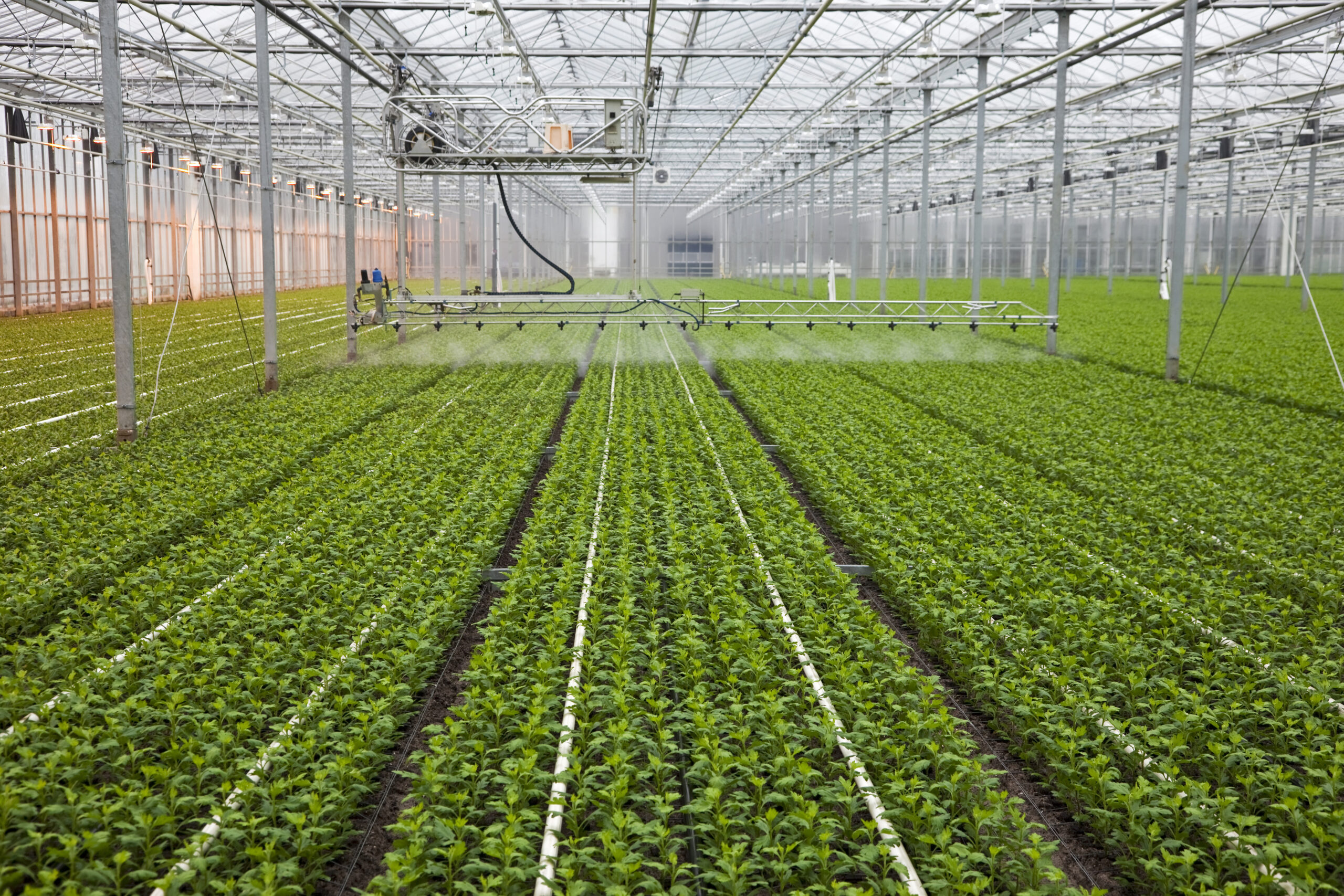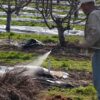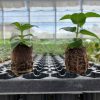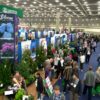Earlier in my career, I attended the grand opening of a large new plug facility. One of the tour’s stops was learning about and watching a new automatic transplanter. The transplanter was interesting, but what stuck with me over the years was the message by the presenter on the importance of production efficiency. The concept of production efficiency applies whatever the size of your operation. Now, you are wondering how mycorrhizae can help a growing operation maximize production efficiency. I suggest you keep reading this article to find out more information.
Plants Grown with Mycorrhizae Perform in Propagation
Whether you start with a seed or a cutting, mycorrhizae maximize production efficiency. In plug production, after the initial roots emerge and stage two begins or in stage two of liner production when the callused cutting begins to root, these initial roots can easily come in contact with the mycorrhizal inoculum in the soil and start the symbiotic relationship. Symbiosis typically takes three to four weeks to complete (but can be shorter depending on the environment and the plant material). The plant starts to benefit once the initial connection is established. Establishing a mycorrhizal hyphal network allows the plant’s root/mycorrhizal network to better provide for the young plant. In plug and liner production, this helps the plant to pass through stages two and three, and then move to stage four as a better and stronger plant. The fertility regime recommended by plug and liner production specialists suggests lower nitrogen (PPM) and lower overall phosphorus levels. These conditions are ideal for the symbiosis process. As symbiosis is established plants can be grown dryer without stressing the plants as the mycorrhizal hyphae provide a moisture reserve for the plants to draw from. The potential use of PGRs might be less as plants grown with mycorrhizae are often better branched. Pest and disease issues can also be less as better-rooted and healthier plugs or liners are less susceptible to pest and disease issues. The goal of mycorrhizae use during propagation is to deliver a better transplant in the end that will produce a more uniform and production-efficient crop.
For those growers that buy in plug and rooted liners, our recommendation is to immediately treat the plants so that the symbiosis can begin, and you as the grower will see benefits sooner. This recommendation makes even more sense since received plug and liner trays often sit for a period to acclimate and/or until the production team has the time to plant the new arrivals.
Transplant Success is a Major Reason for Mycorrhizae Use
Mycorrhizal Applications started to help forestry management companies achieve higher forest seedling transplant success when they replanted areas in the Cascades and other mountain ranges that had been clear cut. This same benefit is available to greenhouse and nursery growers when transplanting mycorrhizae-treated plugs and liners. When a grower starts with stronger and more uniform plugs and/or liners (plants grown with mycorrhizae) their transplant success rate will be higher. The mycorrhizal hyphal network quickly expands into new soil areas ensuring a more stable supply of nutrients and water and reducing the stress on the plant. Plants often stall out after transplant. Eventually, they naturally start to take off, but it does take time. The stalling period is often shorter with mycorrhizae-treated plants. This shortened stall period is one of the factors leading to typically quicker crop times with mycorrhizae-treated plants. The benefit of mycorrhizae-treated plants during transplanting is quicker plant establishment and less plant loss.
When we talk about plant loss, it is important to remind ourselves about the increased cost of plant material. Over time growers have moved to liners and away from seed. The cost of popular seed varieties has also increased. Many liners are from patented plant materials, so their cost has increased. When you combine all these trends, even a fractional decrease in plant loss has an impact on profitability.
Finished Grower Production is Smoother with Mycorrhizae
In larger growing operations plants often transition from a propagation environment/grower to a different finished environment/grower. In smaller operations, it could be the same greenhouse and grower. But in all circumstances, the finished grower wants to start with strong and uniform plants since the ability to cater to weak underperforming plants is either more difficult or impossible.
When it comes to a finished grower’s activities and costs, it all comes down to labor and inputs. Plants grown with mycorrhizae are more efficient at both nutrient and water uptake. We recommend a nitrogen rate of two hundred or less parts per million (PPM) and an on-the-bag phosphorus value below ten (10). Better nutrient utilization should decrease labor costs. The reduced rates of fertilizer and the lower NPK values should lower actual fertilizer costs. The hyphal network is better able to absorb, transfer to the plant, and store for later use of excess water. This has the potential to decrease labor since the plants may need less water applications. This leads to a reduced cost for water. For those growers that pump water, this could allow you to better fit into the constraints of your current water pumping capacity when temperatures are high.
PGR applications can also be less with plants grown with mycorrhizae. Mycorrhizae-treated plants are typically better branched. Dormant buds are activated since the plant is less stressed with mycorrhizal association. Mycorrhizae are not direct plant pest and disease-controlling products. In their effort to expand the root absorptive area, which increases nutrient and water absorption, they typically create less stressed plants with better overall plant health. Plants with better overall plant health are less susceptible to pest and disease issues. The benefit of mycorrhizae-treated plants during finishing is the potential for less labor and inputs, increased crop uniformity, and improved overall plant health.
Plants Grown with Mycorrhizae have a Strong Finish
Crossing the finish line with both healthy plants and a uniform crop is the desire of all growers. Grower retailers are always space-limited, and they want to transfer the entire finished crop to the retail portion of the business. Larger growers want to avoid having multiple picks from a batch of plants. Mycorrhizae use creates a more uniform crop with more saleable plants.
Production Space is Always Costly and Limited
One of the common types of feedback we receive from long-term customers and MycoApply trialing growers is the shortened crop time for plants grown with mycorrhizae. The science is simple, when the plant is grown with less stress, it can perform closer to its genetic potential, which often means a shorter crop time. The benefit is true with both herbaceous and woody plants. The reduction in timing varies by crop and is influenced by the environment in which the plants are grown. Greenhouse and nursery growers can benefit from this impact of mycorrhizal use. Mycorrhizae can maximize production efficiency by shortening crop time.
In my next article, I plan to talk about operation efficiency gains (from ready-for-sales crops to satisfied end-use customers) from the use of mycorrhizae.
Get in Contact
Please reach out if you have any questions about how mycorrhizae can maximize your production efficiency or our MycoApply Mycorrhizae. Contact your local Mycorrhizal Applications Representative or call (866) 476-7800 or email us at inquiries@mycorrhizae.com.
Written by Blair Busenbark, Sales and Commercial Marketing Manager, Mycorrhizal Applications







